In Search of the Real St. Nicholas
Tony Cooke
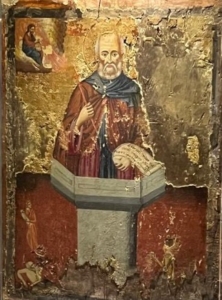
In February of this year (2024), I had the privilege of speaking for four days to pastors at the annual convention at the Association of Protestant Churches in Antalya, Turkey (described as Attalia in Acts 14:25). Antalya is relatively close to Myra, where the real St. Nicholas (AD 270-343) pastored. My friend and seasoned guide, Hakan Bashar was gracious to come from Istanbul to show me historic sites both in Myra and in Patara, the birthplace of St. Nicholas. Before sharing pictures with you, let’s look at New Testament verses about these locations. All of these pertain to the Apostle Paul in his travels.
“Now when they had preached the word in Perga, they went down to Attalia” (Acts 14:25).
“Now it came to pass, that when we had departed from them and set sail, running a straight course we came to Cos, the following day to Rhodes, and from there to Patara” (Acts 21:1).
“…we came to Myra… There the centurion found an Alexandrian ship sailing to Italy, and he [the centurion] put us on board” (Acts 27:5-6).
These locations — Attalia, Patara, and Myra — are on the southern coast of modern-day Turkey.

Myra: Where St. Nicholas Served as Bishop
Paul changed ships in Myra enroute to Rome. Myra is known today for its fascinating rock tombs (which were painted different colors in ancient times). Its theater seated around 10,000 people.


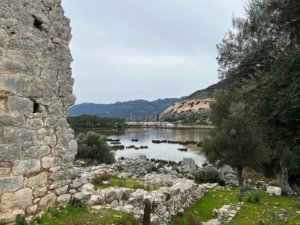
The Church of St. Nicholas
Historian and scholar, Mark Wilson, writes: “The Church of St. Nicholas is dedicated to the important bishop of the city who died on December 6, 343. The church… dates back to the sixth century. In 1087, Italian merchants broke into Nicholas’ sarcophagus and took his remains to Bari.”
In the archaeological museum in nearby Antalya, you will find a few bones (relics) the Italian merchants did not collect, including what is said to be the jawbone (with a molar) of St. Nicholas.

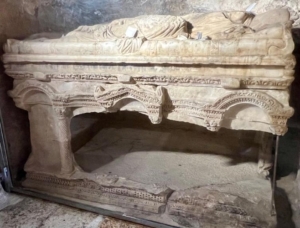

Nicholas Himself
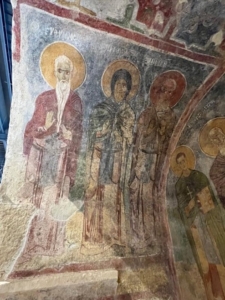
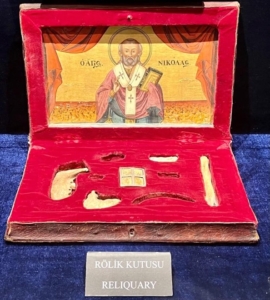
When you remove the myths of the North Pole, reindeer, and elves, and if you dig a bit, you will find that Nicholas was a genuine Jesus-loving church leader who lived in the third and fourth centuries on the southern coast of modern-day Turkey. Tradition indicates that he suffered torture and imprisonment under the Roman emperor, Diocletian, and that after his release, he attended the Council of Nicaea in AD 325. As a Christian and as a pastor, he was known for living with extreme kindness and overflowing generosity.
Here are links to a few websites/articles that present thoughts about “the real St. Nicholas.” I can’t vouch for every story told or for the veracity of every tradition… some are clearly mythical, but I believe that many of the stories about his faith and his consecration to God are grounded in truth.
https://www.joyfulheart.com/christmas/st-nick.htm
https://www.stnicholascenter.org/who-is-st-nicholas
https://www.persecutionblog.com/2014/12/st-nicholas-a-persecuted-christian.html

